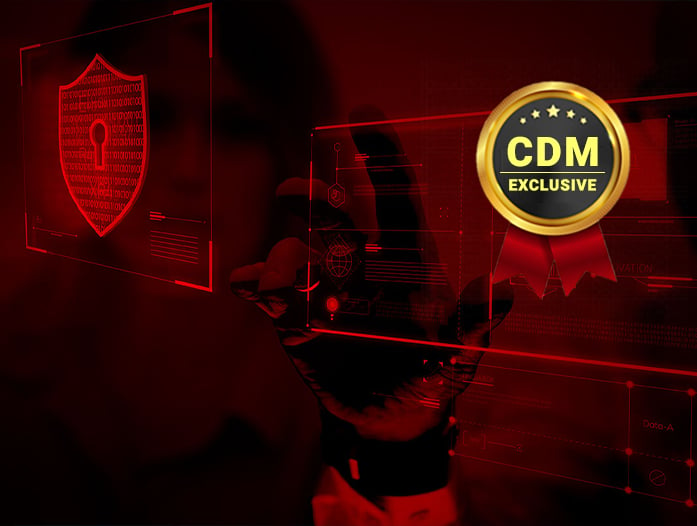- This tiny Bluetooth speaker delivers loud, distortion-free sound - and it's on sale
- 2025 Cyber Security Predictions: Navigating the Ever-Evolving Threat Landscape
- Not Just Another List of Top 10 Metrics You Should Measure
- My new favorite headphones for swimming come bundled in a unique charging accessory
- Why I recommend this Windows laptop to creatives and professionals - even if it's meant for gamers
How to Simplify Zero Trust Adoption

By Bhavya Pathak, Product Marketing Manager, ColorTokens
Gone are the days when an organization could trust everything within the four walls of its perimeter. Cloud computing, and accelerating digital transformation from an unprecedented pandemic have blurred the network perimeter. The COVID-19 crisis necessitated businesses to adopt remote working. This shift has increased the security risk posture of nearly every organization due to vulnerable access mechanisms, inadequate controls over unmanaged devices and infrastructure, putting additional pressure on security teams that are already resource crunched.
With the expansion of the attack surface, organizations have started to put “zero trust adoption” on their priority lists, regardless of whether they are fledgling start-ups or well-established enterprises. But this transition to zero trusts is smooth only in theory. Zero trust implementation comes with its own set of barriers.
Given the challenges and the change in narrative from “who or what to trust” to “Never trust, always verify”, companies must look for ways to adopt a frictionless zero trust strategy so that the true benefits can be realized quickly and efficiently without disruption. They can best achieve this with a managed risk approach and by collaborating with trusted security partners who provide next-gen security solutions and the necessary expertise to help businesses manage their zero trust deployment without any hassles.
Barriers to Zero Trust Security Adoption
While zero trust has become a clear necessity in today’s enterprise networks, its implementation is often a topic of debate. While CISOs might be eager to adopt a zero trust framework across workloads, cloud, data centers, endpoints, and users, they can’t avoid organizational level challenges that decelerate zero trust adoption. Some of these barriers are:
● Low-security operations and intelligence maturity
● Inability to identify security priorities and abused the trust
● Lack of threat and vulnerability visibility across and within assets
● Absence of proactive monitoring or alerting for detection and response
● Lack of in-house IT and security resources, scale, and expertise
Experts’ Roadmap for Zero Trust Adoption
The challenges listed above may seem daunting. But the benefits that an enterprise can derive from the successful implementation of a Zero Trust Architecture far outweigh the challenges. To get started with a zero-trust implementation, here is a 5-step roadmap outlined by Forrester :
1. Identify your sensitive data and segment the network based on data classification
2. Classify and map the acceptable routes for sensible data access by verifying existing workflows
3. Architect zero trust micro-segmentation around sensitive data, and automate and audit rule and access policy baselines
4. Monitor the zero-trust environment with security analytics
5. Embrace security automation and adaptive response by correlating policies and procedures with analytics
In simplistic terms, modern enterprises can implement zero trust in their network by following the critical steps below:
Benefits of Implementing a Zero Trust Model
Post successful implementation of a Zero Trust Framework , these are the benefits that an organization can achieve:
1. Round-the-clock strong security posture against blind spots
2. Minimized threat impact through faster detection capabilities and reduced blast radius
3. Decreased risk of breaches through AI/ML enabled security analytics
4. Faster response time to an ongoing attack through quicker containment process in place
5. Improved ongoing operational effectiveness with fast response and minimal business disruption
Simplified Zero Trust Journey
Operationalizing zero trusts is a two-step process: the implementation of the solution, followed by the continuous threat assessment. In the modern complex threat landscape, organizations need to continuously stay one step ahead of threat actors, i.e. having a 24×7 Zero Trust Coverage of assets both inside and outside the network. Deploying a zero trust solution is the first critical step in combating threats.
But, since hackers manage to breach even the most secure fortress, a containment strategy is key to mitigating risk. A zero trust service that continuously monitors and defends with just-in-time response can help operationalize zero trust, especially if the organization doesn’t have the in-house manpower or expertise to implement it.
This calls for the need of an outcome-driven security-as-a-service that helps enterprises rapidly adopt the proactive zero trust security framework and augments it with a robust security that protects from advanced and hidden attacks, ransomware, and data theft attempts, that traditional defense mechanisms do not catch. So, enhance the security preparedness of your IT team with a frictionless zero trust implementation.
To learn more about how our clients maintain a consistent and elevated security posture by successfully implementing Zero Trust security, click here.
About the Author
Bhavya Pathak, Product Marketing Manager, ColorTokens A dedicated professional, proficient in designing and deploying initiatives for Sales, Marketing & Business Development with her unique blend of technical and management skills and exposure. Post Graduate in Management from Indian School of Business with specialization in Marketing and Strategy & Leadership. Amongst those 10% of students who were selected for PGP in management of Indian School of Business through its Early Entry category for class of 2020. Close to 3 years of diverse work experience in India. Worked as a Cyber Security Analyst for 1 year at Standard Chartered Bank & as a Business Development Associate at Chic Pine, a furniture manufacturing firm. Incorporated the essence of this digitally evolving world by pursuing online certifications in areas of interest. These certifications include one from Harvard Business School, namely HBX CORe and another one from MICA, namely PG certification in Digital Marketing & specialization in Marketing Analytics. World Business Dialogue’s Ambassador to India. Volunteered for Headstart Network Foundation. Also, the city lead for its ” WE” (Women Entrepreneurship) initiative in Raipur. https://colortokens.com/

